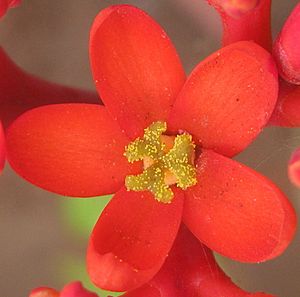Stigma (botany) facts for kids
The stigma is a very important part of a flower. It's like the flower's special landing pad for pollen. Pollen is carried by pollinators, like busy bees, from one flower to another. The stigma is a key part of the female reproductive system of a flower, which is called the pistil.
What is the Stigma?
The stigma is usually found at the very top of the style. The style is like a stalk that connects the stigma to the ovary below. Think of the pistil as a bottle: the stigma is the opening, the style is the neck, and the ovary is the main body.
How the Stigma Works
To catch pollen, stigmas can be different shapes and textures. Some stigmas are hairy, while others are sticky. Many stigmas are both hairy and sticky! These features help them trap pollen grains that land on them. It's like a special glue or a tiny net designed just for pollen.
When a tiny pollen grain lands on the stigma, something amazing happens. The stigma helps the pollen grain start to grow a very thin tube. This tube is called a pollen tube. The pollen tube grows all the way down through the style. It keeps growing until it reaches the ovary inside the pistil. This journey is how the flower gets fertilized and can make seeds.
Images for kids
See also
 In Spanish: Estigma (botánica) para niños
In Spanish: Estigma (botánica) para niños




